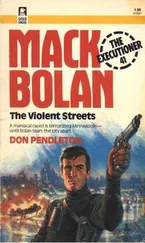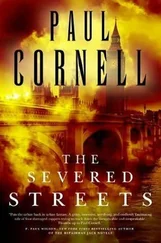There are many journalists who believe that their craft must burden itself with a nodding, analytic tone, that they must report and write with feigned, practiced objectivity and the presumption of omniscient expertise. Many are consumed by the pursuit of scandal and human flaw, and believe it insufficient to look at human beings with a skeptical yet affectionate eye. Their work is, of course, accurate and justifiable-and no closer to the actual truth of things than any other form of storytelling.
Years ago, I read an interview with Richard Ben Cramer in which he was accused by a fellow journalist of engaging in a love that dares not speak its name-at least not in newsrooms. Regarding the candidates he followed for What It Takes, his masterful narrative of presidential politics, Cramer was asked if he actually liked the men he was covering.
“Like them?” he replied. “I love them.”
How could he write a nine-hundred-page tome in their voices if he didn’t love every last one of them, warts and all? And what kind of journalist follows human beings for years on end, recording their best moments and their worst, without acquiring some basic regard for their individuality, their dignity, their value?
I admit it. I love these guys.
At this writing, Richard Fahlteich-a detective in Landsman’s squad in 1988-is a major and the commander of the homicide unit, though he is planning to retire after more than thirty years service within the month.
Lieutenant Terrence Patrick McLarney, who commanded a squad on D’Addario’s shift fifteen years ago, is a shift commander, having fought his way back to the unit after years of exile in the Western and Central Districts, where he was banished after his shift commander politely declined an invitation to fisticuffs in the headquarters garage.
The reason McLarney felt the need to extend such an invitation was simply that his shift commander was no longer Gary D’Addario, who had been promoted first to captain, and, later, to major and command of the Northeastern District. The man who replaced D’Addario did not understand the homicide unit, in the opinion of many. He certainly didn’t understand McLarney, who, despite his protestations, his calculated appearance and his general demeanor, happens to be one of the smartest, funniest and most honest souls I ever had the privilege to know.
For his part, D’Addario thrived not only as a district commander but as the technical advisor to Homicide and ensuing productions. His portrayal of Lieutenant Jasper, the tactical commander on the drama, brought, if not widespread acclaim, then an opportunity for many subordinate commanders to advise him on the value of his day job.
He was forced to resign abruptly three years ago by a police commissioner who never offered a reason, simply summoning D’Addario to his office and issuing the demand.
That this came a couple days after D’Addario first appeared in a brief scene of The Wire, playing the part of a grand jury prosecutor, may be relevant. The current city administration is known to dislike the HBO drama, and though D’Addario wasn’t the only department veteran to appear in episodes, he was the only ranking commander to do so at the time. I wrote a letter to the mayor, noting that the part was a neutral one and that D’Addario’s dialogue brought no discredit on the department. I suggested that if displeasure with the major stemmed from his appearance on the show, then the decision should be reconsidered, and, further, that the administration should inform us one way or another if it had concerns about officers appearing on the drama.
No response was forthcoming.
In 1995, Donald Worden retired on his own terms after more than three decades service. Kevin Davis-the Worden of Stanton’s shift-called it quits the same day. I made it a point to go out with the two veterans on their last shift, when they picked up a suspect from the city jail and tried unsuccessfully to get him to roll on an old murder. That story of their last day on the job was my last staff byline for the Sun-a personal metaphor of sorts, not that anyone was going to notice.
Within a year, as the murder toll jumped and clearance rates fell, the department hired Worden back as a civilian contractor to help clear cold homicide cases. He is clearing them still, along with his cold case supervisor, Sergeant Roger Nolan, putting blue names on The Board even though he carries neither badge nor gun.
When I see Worden on occasion, usually for a pint or two at that Irish dive on O’Donnell Street, I always offer him a quarter. He politely declines, though he can’t help but point out that it would now be forty-five cents.
Along with Fahlteich and McLarney, Worden and Nolan are the only remaining members of D’Addario’s shift still on duty. Much of the remainder of that shift is scattered throughout mid-Atlantic law enforcement, most having put in their retirement papers to take better-paying investigative positions in other agencies.
Worden’s partner, Rick James, went to work for the U.S. Defense Intelligence Agency. Rich Garvey and Bob McAllister took positions as investigators with the federal public defenders office, with Garvey working out of the Harrisburg, Pennsylvania, branch and McAllister employed in Baltimore.
Gary Childs became an investigator for the Carroll County State’s Attorney’s Office, and later a homicide detective in Baltimore County. He was joined in Baltimore County by Jay Landsman, who was, in turn, joined by his son. And with two generations of Landsmans working the same precinct, some hilarity naturally ensued.
Recently, on a surveillance, Jay got on the radio to ask if his son, who ranks him, had the eyeball on a car they were following.
“Got him, Dad,” came the laconic radio response, followed by delighted laughter from the rest of the surveillance detail.
Without Roger Nolan to protect him, Harry Edgerton soon ran afoul of a department with little tolerance for iconoclasts.
In 1990, his longtime partner, Ed Burns, had returned from the successful joint FBI-Baltimore city prosecution of Warren Boardley’s drug organization and immediately wrote a proposal for a specialized unit that could conduct long-term proactive investigations of violent drug crews. When that proposal disappeared on the eighth floor without so much as a response, Burns chose to cash in his chips, retiring in 1992 to begin a teaching career in the Baltimore city schools-a career that I shortstopped by a year or two, convincing Ed to go with me to West Baltimore to report and write The Corner. That partnership continues-Ed is currently a writer and producer on The Wire.
On his own, Edgerton left the shelter of Nolan’s squad-where his sergeant always had his back, and where the complaints of co-workers were always received with some salt. He transferred from homicide to a fledgling investigative squad-the violent crimes task force-which Edgerton believed could become the major case squad that he and Burns had long imagined.
The VCU, however, proved to be nothing of the sort, and, as it began concentrating on meaningless street rips and corner raids, Edgerton began a singular rebellion, going his own way, ignoring the orders of supervisors and alienating fellow detectives as only Harry Edgerton can.
A deputy commissioner then assigned him the quixotic, existential task of recovering the gun of a patrol officer who had been wounded in East Baltimore. Within weeks Edgerton was in negotiations with an east-side dealer to do precisely that. His bargaining chip was a series of homemade porn videos, all packed in a leather case seized during a drug raid. Acknowledging to the dealer that the tapes were of a personal nature, Edgerton was offering to exchange them for the officer’s gun. But in the interim, as negotiations progressed, a supervisor charged him with failing to inventory both the tapes and the leather case with evidence control, and, pending a trial board, Edgerton was suspended with pay. Then, before that case could be heard, he was found in West Baltimore, armed with his service revolver though suspended, meeting with a man Edgerton described as an informant.
Читать дальше












